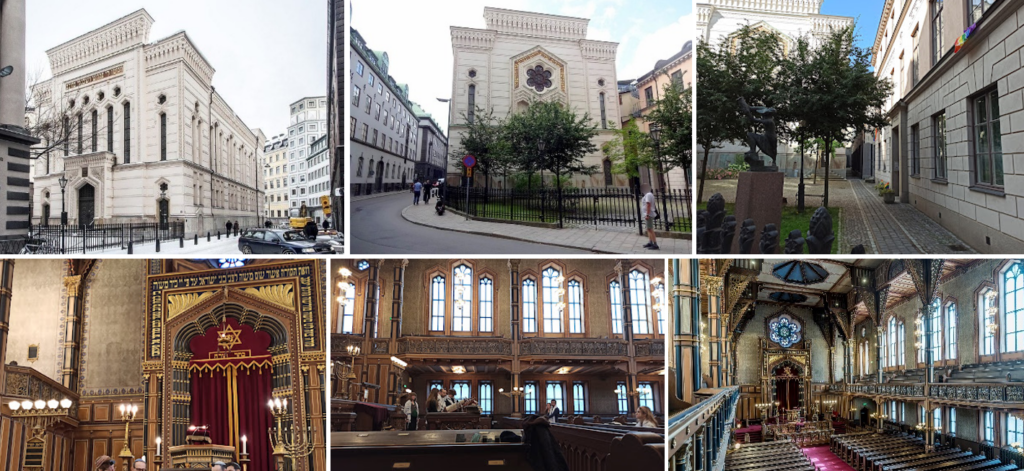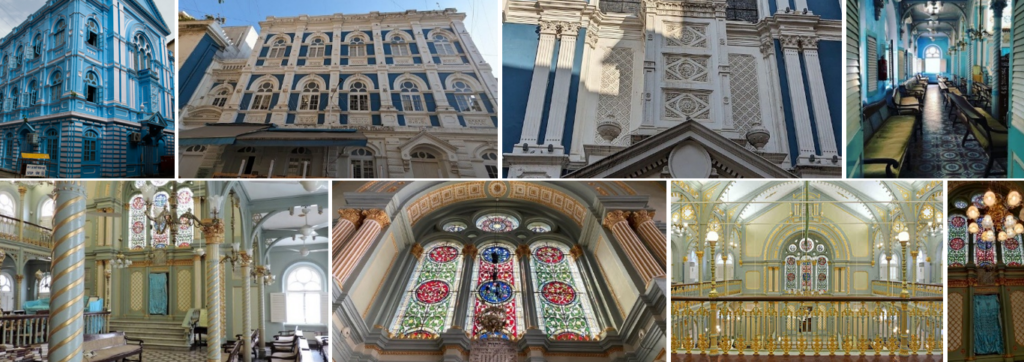
Terumah (תְּרוּמָה – contribution), Rosh Chodesh (רֹאשׁ חֹדֶשׁ – beginning of the month (new moon)), Shekalim (שְׁקָלִים – shekels)
Hallel(1) (Rosh Chodesh), the Torah portion for Terumah: Exodus 25:1 – 27:19, for Rosh Chodesh: Numbers 28:1-15, for Shekalim: Exodus 30:11-16 and haftarah Shekalim: Kings II: 11:17 – 12:17 (Ashkenazim start at 12:1), and for Rosh Chodesh, the verses Isaiah 66:1 and 66:24 or 66:23.
All these texts have a strong connection to the Temple and the divine service, whether it’s about its construction, maintenance, or the conduct of worship.
Exodus 25:8
וְעָשׂוּ לִי, מִקְדָּשׁ; וְשָׁכַנְתִּי, בְּתוֹכָם.
They shall build Me a sanctuary, and I will dwell among them.

The Great Synagogue of Stockholm, Stora synagogan, displays this verse Exodus 25:8 on its facade in golden letters on a red background, framed by a decorative border.
It is the largest of the three synagogues in the city. Its construction began in 1867 under the direction of architect Fredrik Wilhelm Scholander(2) in the neo-Moorish style, a common influence in 19th-century European synagogue architecture. It was inaugurated on September 16, 1870(3). It can accommodate around 900 people and includes balconies reserved for women according to Orthodox Jewish tradition. The bimah (reading platform) is located at the front, and an organ is installed on the upper floor, reflecting the influence of German Reform Judaism, which was then dominant in Sweden.
The Great Synagogue of Stockholm is a classified building(4), protected by law due to its historical and architectural significance.
(1) Hallel consists of Psalms 113 to 118. For the small Hallel, the first 11 verses of Psalms 115 and 116 are not recited. The complete Hallel is recited on the three pilgrimage festivals and Hanukkah, while the small Hallel is recited on Rosh Chodesh, the last six days of Passover, and on Yom Ha’atzmaut.
(2) Fredrik Wilhelm Scholander (1816-1881) was a Swedish architect, artist, and professor, trained at the Royal Swedish Academy of Fine Arts in Stockholm and specialized in the historicist style (a 19th-century Western trend seeking to renew architecture by drawing on ancient styles. Various “neo” styles thus emerged: neo-classicism, neo-baroque, neo-gothic, etc.).
(3) Just before Yom Kippur, on the 8th of Tishri 5631.
(4) The list of protected buildings is established by the Riksantikvarieämbetet, Sweden’s national heritage board responsible for the conservation of cultural heritage in Sweden.


